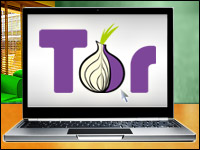
The Linux Phone Standards (LiPS) Forum has announced the completion of its LiPS Release 1.0 specifications aimed at fostering interoperability across the Linux-based mobile phone market.
In June, LiPS rolled out the first installment of Release 1.0, including a reference model, address book and voice call enabler, as well as user interface services such as widget sets, navigation and text input method APIs (application programming interfaces). The announcement earlier this week completes the set with specs for telephony, messaging, calendar and instant messaging as well.
“Standards-based interoperability is crucial to the success of the global telecommunications marketplace,” said Haila Wang, president of the LiPS Forum. “LiPS is following the clear path blazed by GSM (global system for mobile communications), TCP/IP (transmission control protocol/Internet protocol), WiFi and other standards that enable communications among device types and brands, over multiple operator networks and across regional markets.”
The completed open specifications are publicly available on the LiPS Web site.
Industry Benefits
Formed in 2005, the LiPS Forum seeks to standardize Linux-based services and APIs so developers can create mobile applications for use across different Linux phones. Founding members of the 20-member organization are Access, Arm, Cellon International, Esmertec, France Telecom, Orange, Huawei Technologies, MIZI Research, MontaVista Software, Open-Plug and VirtualLogix.
Now that Release 1.0 is complete, LiPS enables mobile industry players to achieve basic interoperability for applications and services deployed on Linux-based phones, the LiPS Forum said. Those benefiting from the specifications include Linux-based software stack suppliers, mobile device OEMs (original equipment manufacturers) and regional and global telecom operators, it added.
Still planned for release in 2008 are an application framework, services APIs, device management APIs and additional enabler APIs, such as for multimedia.
The Android Factor
Since LiPS began rolling out specifications in June, the open mobile landscape has changed considerably, most notably by the release last month of Google’s Android platform and the creation of the Open Handset Alliance (OHA).
Indeed, LiPS appears to acknowledge that in its announcement, asserting that “in contrast to recent announcements from other bodies promoting Linux-based mobile software, LiPS output targets interoperability through real open standards and specifications, not de facto acceptance of a single platform implementation.”
It’s not clear to what extent — if at all — Android and the LiPS specifications overlap, but “that’s a slap, and the antagonistic tone is worrisome,” Bill Hughes, a principal analyst with In-Stat, told LinuxInsider.
Potential for Confusion
Particularly given that there’s very little overlap in membership between LiPS and the OHA, “it’s unlikely that Android would happen to comply with LiPS 1.0,” Hughes said.
The whole notion of open source involves cooperation, so “to have antagonism, whether intended or not, goes against its principles,” Hughes added. “That doesn’t mean both won’t be successful, but it’s not the utopian world generally looked upon within the community.”
Without cooperation, confusion will likely result, and “that’s a bad thing for everybody,” Hughes explained. “At the end of the day, confused customers don’t buy — and confused developers don’t write apps. Then you have a fragmented ecosystem.”
The market is big enough that both standards could succeed, “but the pie would be disproportionately smaller for both,” Hughes concluded. “It’s hard to see how this will play out.”



















































